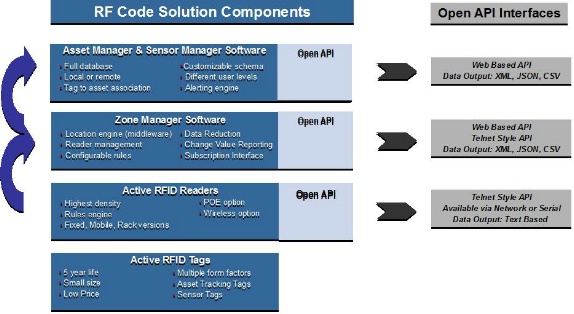RF Code’s VP of Marketing and Strategic Partnerships Richard Jenkins was recently interviewed for an article by Zen Kishimoto of Alta Terra Research for Nethawk.Net. In it, Richard talk about the unique benefits of RF Code’s products. From the Article:
I asked Richard about RF Code’s differentiation. Every company claims that its solutions and products are unique and stand out from the competition. His answer was twofold.
Product layering: One part is a common infrastructure to track and monitor elements in a data center. In a single infrastructure, different tags and sensors hang together, ranging from sensors for humidity and temperature to those for motion. This is well described in the following figure.

In this common hardware infrastructure, they put in a higher layer of software for more sophisticated processing.
Open API: Expanding this common product infrastructure philosophy, I would like to classify two major trends for integration. The DCIM market is growing but still rather confusing. There are many aspects to managing a data center. A few analysts have defined a model and areas of coverage. In addition, an increasing number of vendors have rebranded their tools and utilities as solutions for DCIM. Because no single vendor could provide a complete and comprehensive solution for the entire data center operation, large and small vendors alike have started to partner together to provide comprehensive solutions.
Wireless communications: The second point Richard raised was wireless communications. When you see racks of IT gear in their surroundings, you probably see many cables for networking and power alike all over the place. If we place sensors in all the strategic locations, you would be inundated with many more cables for communications and sourcing for power. Managing those cables alone would add a burden for data center operators. RF Code, as its name indicates, manufactures and markets only wireless sensors with no cables.


